I have been needing to shape and temper a bit of steel for quite some time, but have put it off with one thing or another. My belt grinder has been acting flakey, so I really need to put together a bunch of parts I have been collecting and make a better one. A couple of the parts need to be forged, so I lit my forge.
I was very lucky to obtain some top grade coal. Several sources agree that this is the cleanest burning coal they have ever seen. Even then you need good ventilation, because whenever you put fresh coal on the fire, it creates massive amounts of smoke often quite yellow with sulfur dioxide.
This is not stuff you want to breath. Fortunately after a few minutes the smoke subsides and you can work.
When you read ads trying to convince you of the wonders of clean coal, remember that clean is a relative thing and don’t believe the lying liars that published it.
If you look to bottom right of the photo, you can see the vacuum tube from the small wet/dry vacuum I use as a blower. It connects to a pipe running through the forge, with holes at the center to blow air through to coal. Because the vacuum cleaner produces way too much air, I have to shunt a bit off.
Here is the damper I made for the job.
This can be opened to reduce the airflow into the coal. The extra air tends to blow right on me, which is a good thing when working over a forge.
The fun part is working the metal!
Bob
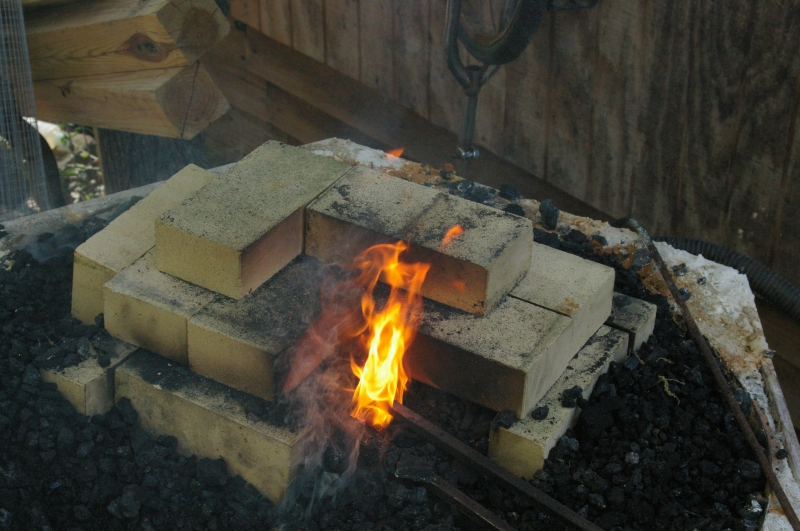
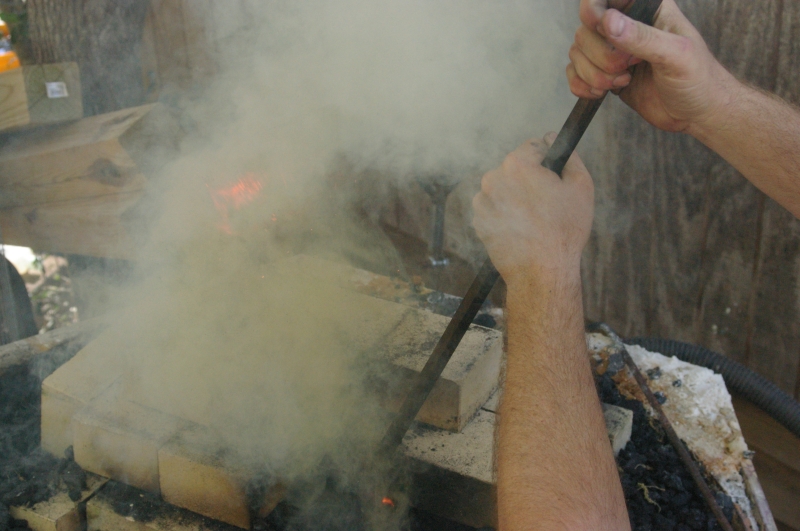


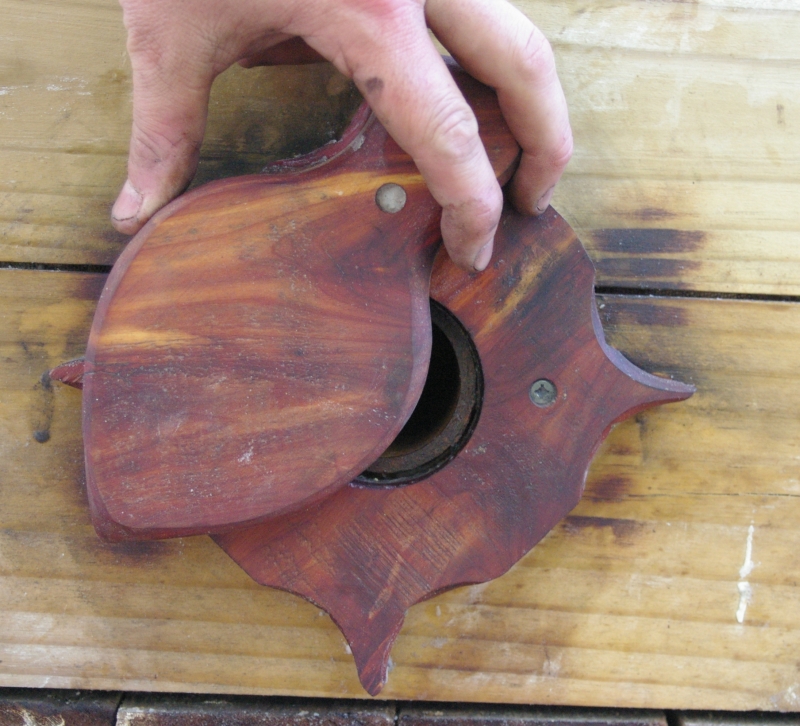
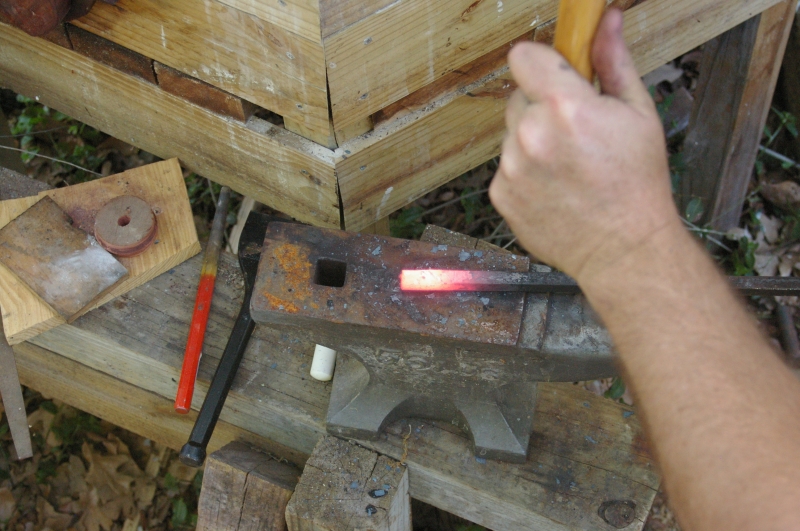
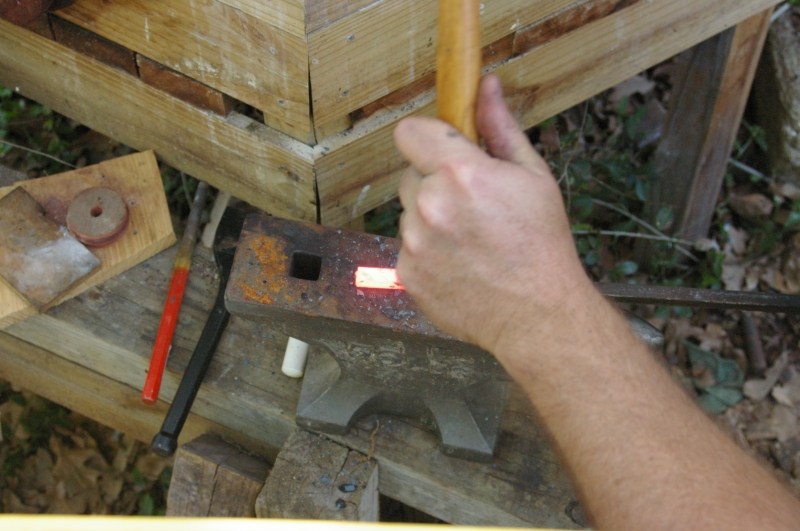

 A page Dedicated to My Writing
A page Dedicated to My Writing
Hey Bob,
I was just checking out your forge. AMAZING! How long have you had it? I also like the changes to your website and it looks a lot nicer.
As far as leather work is concerned, I’ve been looking at several conditioners like Ballistol, neatsfoot oil, saddle soap, water-based wax, and laquer. Which do you recommend and why? If you apply a finish, does that mean that you do not need a periodic conditioner such as oil?
(feel free to e-mail if you like)
John
Thanks, John! This forge is about two years old. It is way bigger than it needs to be.
My personal choices for preservation are actual real pure neatsfoot oil for weather proofing, Ballistol for holding steel tools, and Camellia for holding steel that will contact food.
Saddle soap is inconsistent so I would ask someone who rides horsed in all weather, what they prefer. When using saddle soap, I work up a lather, apply the lather and clean the leather with it. I try to remove all of the soap that I can when I am done.
All good oils for leather are mostly nondrying. They will eventually evaporate. So you will need to regularly treat with a touch of oil to maintain your leather. Wax can reduce this, but not stop it.
Nikwax is reasonably recent, but a lot of people like it. When silicon oils first came out a lot of folk raved over them. Now most leatherworkers avoid the silicon. I used it quite a bit over the years and I am not real impressed with the results. I have no experience with Nikwax, but it seems like a good idea. I have treated some leather with an oil mix made of wax, turpentine and camellia oil. It seems to have done well so far, but a real test takes a few years.
Bob
This is the first I’ve encountered
your blog so pardon if this has
been discussed before.
Have you tried charcoal ?
Charcoal works, but takes a bit more to manage the high heat.
Bob